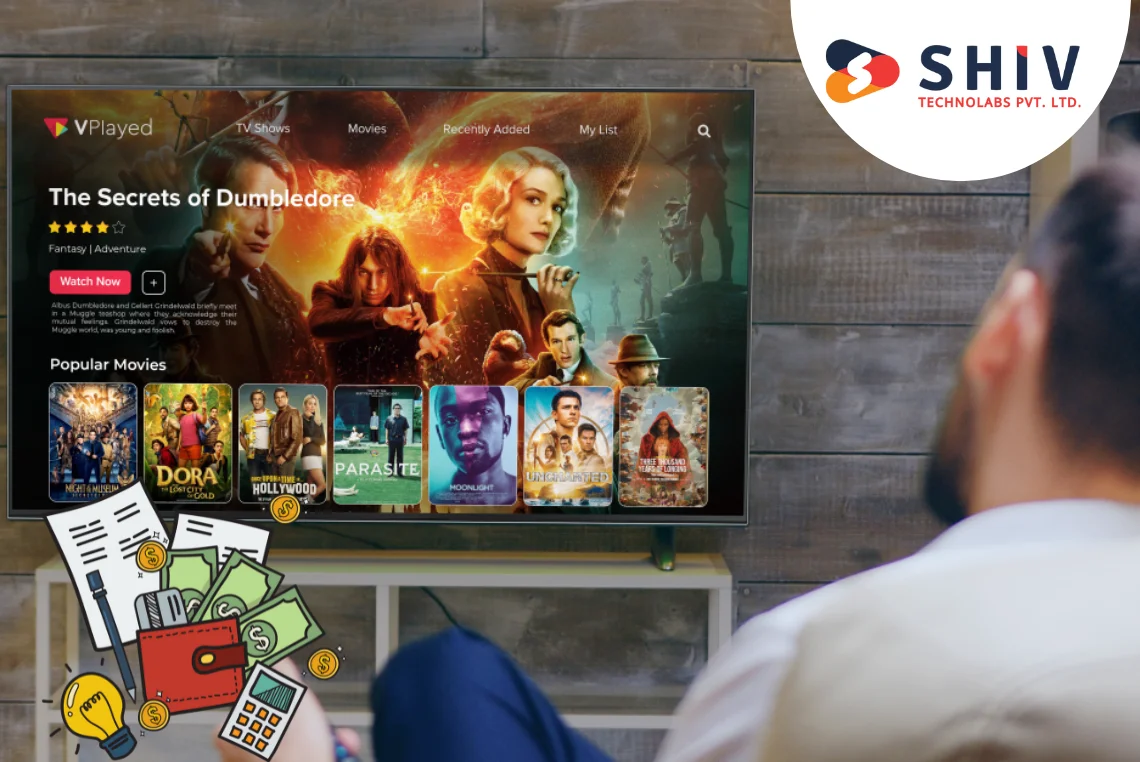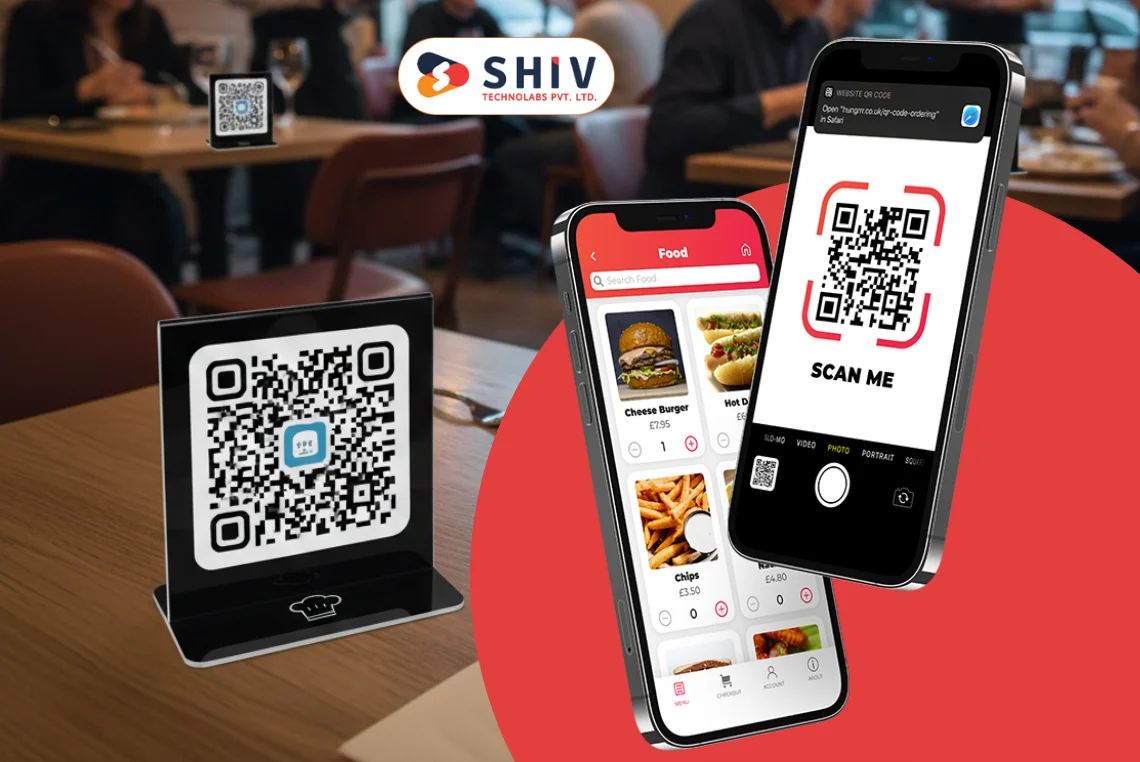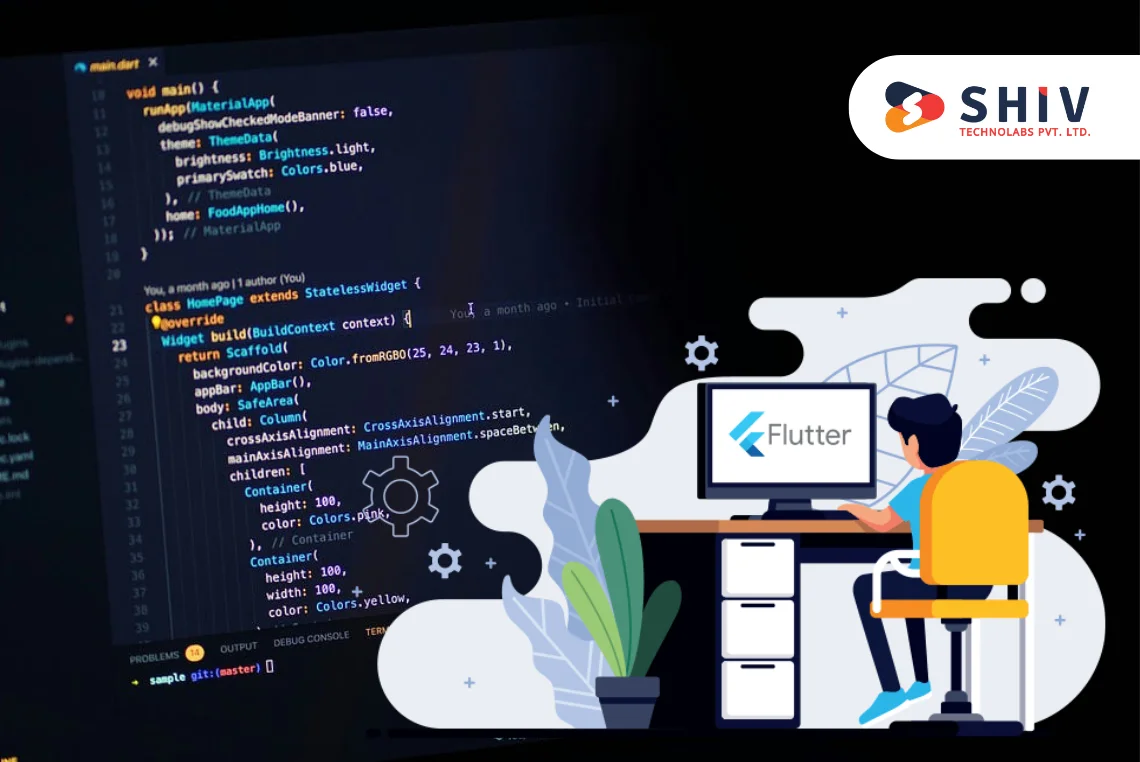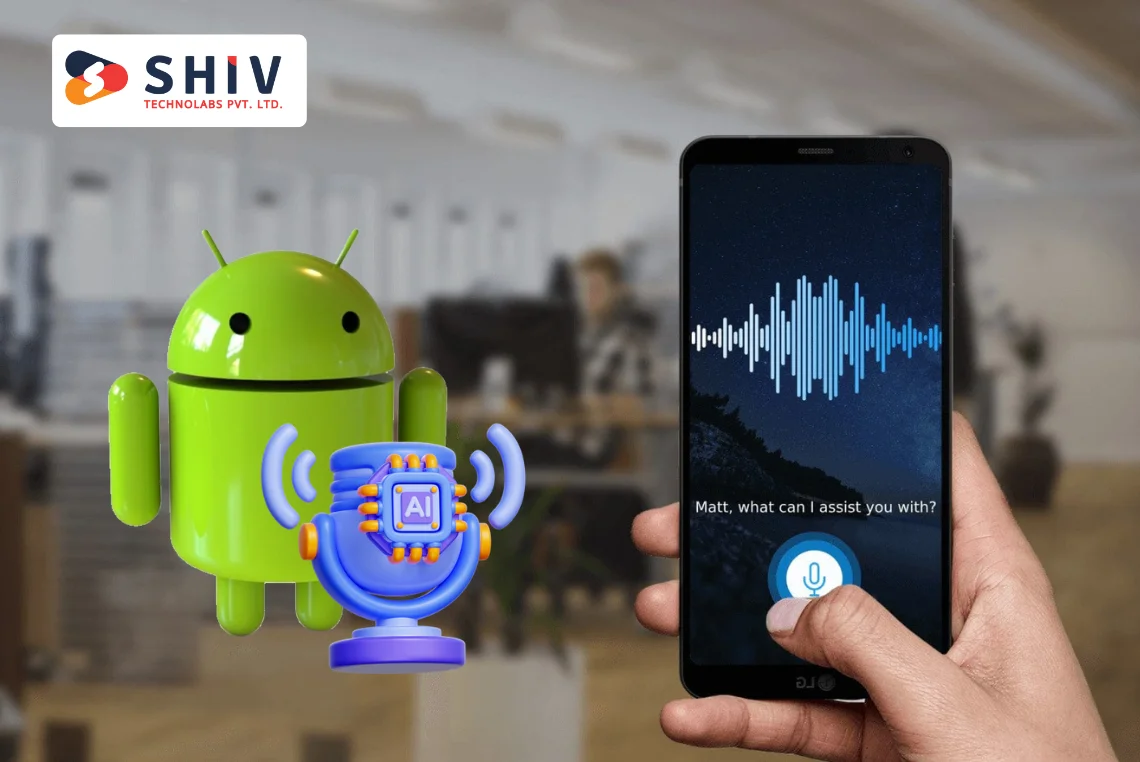Table of Contents
OTT apps have changed how people watch video. Whether it’s shows, sports, education, or fitness, users expect to watch anytime, on any screen, without being tied to a TV schedule.
If you’re thinking about building an OTT app, the first thing you’ll want to know is how much it costs. The truth is, there’s no flat answer. It depends on what you want the app to do, how polished it needs to be, what features you include, and how many platforms you want to cover.
This guide breaks it down for you, feature by feature, platform by platform. Whether you’re planning a simple streaming app or something closer to Netflix or Hotstar, you’ll get a clear idea of what to expect in terms of time, budget, and decisions that affect both.
Why OTT Is Replacing Cable?
People don’t wait around for shows to air anymore. They want the freedom to watch what they like, when they like, and on whichever screen is closest. That’s exactly what OTT apps offer, and why they’ve replaced traditional cable for millions.
Here’s what makes OTT more appealing:
- Choice and flexibility: Viewers can pick from movies, shows, live streams, or user-generated content—all in one app.
- Any device, any time: OTT apps work on phones, tablets, smart TVs, and laptops. You can pause on one device and continue on another.
- No more schedules: There’s no need to follow fixed broadcast times. Users can watch at their own pace, binge entire seasons, or catch up later.
Cable still exists, but it no longer sets the standard. People expect apps to do more, and that shift is what drives OTT development forward.
Current Trends in OTT Platform Development

If you’re building an OTT app in 2025, you’re not early—and you’re not late. You’re building in a space that’s already huge and still growing fast.
According to PwC, global OTT revenue is set to hit USD 112.7bn in 2029, from USD 61.9bn in 2024, nearly double what it was. That alone should tell you there’s plenty of room to build something smart.
But big numbers aside, what’s changing in how people use OTT apps—and what do you need to pay attention to when developing one?
Let’s break it down.
# Smart TVs are leading the charge
More than half of OTT viewing already happens on Smart TVs. 66% of global OTT video plays in 2024 came from TVs, not phones or laptops (Conviva). So if you’re thinking “mobile-first,” it’s time to also think Fire TV, Apple TV, Roku, or Android TV. That’s where users are spending serious screen time.
# Small, focused apps are winning big
Not every app has to be a Netflix clone. Platforms like Shudder (just horror), Crunchyroll (only anime), or CuriosityStream (documentaries) prove that people are willing to subscribe to niche platforms. Statista says 38% of Gen Z already pay for at least one niche streaming app. So if you’ve got focused content and a clear audience, that’s enough to start.
# Speed and design make or break apps
It doesn’t matter how good your content is—if your app loads slowly, users will leave. Deloitte found 63% of users exit if an app takes more than 10 seconds to load. The trend is clear: clean, responsive designs win. Cluttered screens and slow load times won’t survive.
# People expect personal recommendations
If your app still shows the same home screen to everyone, you’re already behind. According to Netflix, over 80% of viewing comes from algorithm-based suggestions. That means if your app remembers what users watched, finished, skipped, or liked, it can suggest better content and keep people watching.
# Offline viewing is no longer a bonus
In places with high data charges or unreliable internet, downloads matter. According to Apptopia, OTT apps with offline access saw 28% higher retention over three weeks. It’s simple: give people a way to watch without worrying about signal or Wi-Fi, and they’ll stick around longer.
# Performance is a deal-breaker
Bitmovin says users quit a video within 90 seconds if it buffers too often. You can’t fix that with a better thumbnail or catchy title. If your video doesn’t play smoothly, nothing else matters.
So what do all these trends mean for you? It means building an OTT app isn’t just about uploading content and hitting publish. It means paying attention to what people want in real life—fast loading, smooth playback, tailored suggestions, and content they care about.
Types of OTT Apps You Can Build
Not every OTT app works the same way. Some stream live TV, others offer movies on demand, and some mix both. Before you dive into design or features, you need to decide what kind of app you’re building. This decision affects your development time, cost, and technical setup.
Here are the three most common OTT models:
1. On-Demand Streaming Apps
This is what most people think of when they hear “OTT.” Apps like Netflix, Prime Video, and Disney+ fall into this category.
They let users browse a library of movies, shows, or videos and watch whatever they choose, whenever they want.
This model works well for:
- Entertainment platforms
- Educational course libraries
- Fitness or yoga programs
- Regional film apps
Key features usually include watch history, playlists, multiple profiles, and subtitles.
2. Live Streaming Platforms
These apps show content in real-time, just like traditional TV. Users can’t skip ahead or pause indefinitely. Think of live sports, concerts, webinars, or religious broadcasts.
These apps need a reliable streaming setup that can handle thousands (or millions) of viewers at once.
They’re commonly used for:
- Sports networks
- News channels
- Live event broadcasts
- Online classrooms or webinars
You’ll also need features like chat, live comments, or Q&A if you want to keep it interactive.
3. Hybrid OTT Apps
This model combines both on-demand and live streaming. Many modern apps use this format. For example, Hotstar offers live cricket and also lets you watch series or movies later.
This model gives users flexibility and keeps them engaged for longer.
Hybrid apps are a good fit for:
- Broadcasters shifting from cable to app-based delivery
- Sports and entertainment networks
- Media platforms with a mix of daily shows and archives
This setup usually takes longer to build and test, but it offers the most flexibility in terms of features and content flow.
Each type serves a different need, and the right choice depends on your content and audience. Want to build for live sports? You’ll need real-time streaming with minimal delay. Planning a niche film library? A simple on-demand model might be enough to start.
How Much Does It Cost to Build an OTT App in 2025?
The cost of building an OTT app depends on how big your app is, what features it has, and which platforms you want it to run on. Below are real estimates based on the level of complexity and functionality.
# Basic OTT App
This kind of app includes only core features like login, video playback, and basic content browsing. It’s built for one platform—usually Android or iOS.
It’s a good starting point if you’re testing your content with a small audience.
| Component | Cost Estimate (USD) |
|---|---|
| UI/UX Design | $3,000 – $5,000 |
| Frontend Development | $6,000 – $8,000 |
| Backend Setup (Simple CMS) | $5,000 – $7,000 |
| Basic Video Player | $2,000 – $3,500 |
| Login + Profile | $1,500 – $2,000 |
| Testing & QA | $2,000 – $3,000 |
| Total Estimated Cost | $19,500 – $28,500 |
This setup usually supports up to 1,000 videos and can be live within 2–3 months.
# Mid-Level OTT App
This version supports Android and iOS, includes subscriptions, user watch history, and a basic admin dashboard. It’s meant for creators or companies with a growing audience and monetization plans.
| Component | Cost Estimate (USD) |
|---|---|
| UI/UX Design | $5,000 – $7,000 |
| Frontend (Android + iOS) | $12,000 – $16,000 |
| Backend with Database | $8,000 – $10,000 |
| Adaptive Video Streaming | $4,000 – $6,000 |
| Login, Profiles, Watchlist | $3,000 – $4,000 |
| Subscription & Payments | $4,000 – $6,000 |
| Admin Panel | $3,000 – $5,000 |
| Testing & QA | $3,000 – $4,000 |
| Total Estimated Cost | $42,000 – $58,000 |
With more features and platforms, the timeline extends to around 4–6 months.
# Advanced OTT App (Multi-Platform)
This is a full-featured app with live streaming, Smart TV support, analytics, CDN integration, multi-language, and advanced personalization. Built for high traffic and multiple content types.
| Component | Cost Estimate (USD) |
|---|---|
| UI/UX Design | $8,000 – $12,000 |
| Frontend (Web, Mobile, TV) | $20,000 – $30,000 |
| Advanced Backend Infrastructure | $15,000 – $25,000 |
| Live Streaming Engine | $8,000 – $12,000 |
| Profiles, History, Watchlist | $5,000 – $7,000 |
| Subscription + Pay-Per-View | $6,000 – $10,000 |
| Multi-language + Multi-currency | $4,000 – $6,000 |
| CDN + DRM + Security Features | $6,000 – $9,000 |
| Admin Panel with Analytics | $5,000 – $7,000 |
| Testing, QA, and Scalability | $6,000 – $8,000 |
| Total Estimated Cost | $83,000 – $126,000 |
This kind of OTT platform can take 6–9+ months, depending on how many platforms and features you include.
# Optional Add-Ons (For Any Tier)
Some features aren’t essential at launch but can be added later based on need or audience feedback.
| Optional Feature | Additional Cost (USD) |
|---|---|
| Offline Downloads | $4,000 – $7,000 |
| Recommendation Engine (AI) | $6,000 – $10,000 |
| Chat or Community Module | $3,000 – $5,000 |
| Multi-User Profiles | $2,000 – $4,000 |
| In-app Purchase Store | $3,000 – $6,000 |
Adding too many of these early can slow down development. Most apps add them after launch.
Building an OTT app in 2025 can cost anywhere between $20,000 and $130,000, depending on how simple or complex the project is.
- A basic single-platform app with standard features like login, video playback, and content browsing will sit on the lower end of that range.
- If you want multi-platform support (mobile, web, Smart TVs), live streaming, subscription management, admin dashboards, and an advanced backend, the cost moves to the higher side.
- Add-ons like offline downloads, AI-based recommendations, or real-time chat features can increase the total even further.
What Drives OTT App Costs the Most?

Not all features cost the same. Some require more design time, backend setup, or third-party tools. Others affect your ongoing budget, like streaming quality or storage. If you’re wondering why two OTT apps with similar designs can cost tens of thousands apart, this is why.
Let’s look at the biggest factors that impact both your one-time development cost and long-term spending.
1. Features and Custom Logic
Every added feature—like offline downloads, personalized watchlists, or live chat—requires its own set of backend connections, frontend screens, and testing time. Even small add-ons can take days or weeks to build.
Custom logic—like auto-play next episode, multi-user profiles, or language toggling—also adds weight to development. Pre-built tools help, but most OTT platforms still need tailored logic to handle their specific content types and flow.
2. Number of Supported Platforms
A mobile-only OTT app costs much less than one built for Android, iOS, web, and Smart TVs. Each platform has its own design guidelines, testing tools, and app store submission process.
Here’s a quick rule:
More platforms = More design work + More code + More bugs to fix
If you’re building for phones only, your cost is lower. Add Smart TVs and you’re looking at a much larger scope.
3. UI/UX Design Complexity
Good design isn’t just about colors. It’s about how quickly users find content, how smooth playback feels, and how few steps it takes to start watching. If your OTT app feels clunky or hard to navigate, users will drop off, even with great content.
Interactive sliders, real-time previews, dark/light mode, and custom loading screens—each of these adds design time and cost.
4. Streaming Quality and Infrastructure
If you want to stream HD or 4K videos, you’ll need stronger backend support. That includes:
- CDN (Content Delivery Network) to serve video faster
- Adaptive bitrate streaming to adjust quality based on internet speed
- Strong storage for your video files (cloud hosting, encrypted storage)
The better the viewing experience, the more it costs to maintain.
5. Backend Setup and Scalability
Your app may start small, but it needs to scale. That means your backend must handle growing traffic, large libraries, and user data safely.
Setting up a scalable backend involves:
- Choosing the right database (e.g., PostgreSQL, MongoDB)
- Managing APIs for content, users, and payments
- Using load balancers, queues, and caching for speed
- Planning for outages, backups, and updates
6. Third-Party Tools and APIs
Many OTT apps use third-party services for things like:
- Payment processing (Stripe, Razorpay, Apple Pay)
- Push notifications (Firebase, OneSignal)
- Video analytics (Mux, Mixpanel, Amplitude)
- Social login or single sign-on
These tools speed up development but often come with monthly fees or usage-based pricing.
7. Security and Compliance
If your app charges money or collects user data, you can’t ignore privacy. You’ll likely need:
- DRM for content protection
- GDPR or CCPA compliance
- Secure login (OAuth2, 2FA, encrypted tokens)
- Server-side validation for all sensitive actions
Skipping these may lower your initial cost, but it will cost you more later, legally or technically.
Why Work With Shiv Technolabs
Building a quality OTT app takes more than just code. You need a team that understands video tech, content delivery, platform-specific challenges, and user behavior.
That’s where we come in.
At Shiv Technolabs, we’ve helped content creators, media businesses, and startups build reliable, fast, and scalable OTT platforms across mobile, web, and Smart TVs.
Here’s what you get when you work with us:
- A dedicated team that handles design, backend, testing, and platform launches
- Experience with tools like AWS, Mux, Firebase, and payment gateways
- Support for on-demand, live streaming, and hybrid OTT models
- Transparent pricing with no surprise costs
- Post-launch support and updates to keep your app running smoothly
Ready to build something that works across devices and keeps users watching?
👉 Contact us to start planning your OTT app.
Final Thoughts
OTT apps aren’t just for major networks or streaming giants. Whether you’re planning a niche platform, hosting live content, or offering a subscription-based app, there’s plenty of room to build something that works—if it’s planned with care.
Start with your content and your audience. What experience are you trying to offer? Focus on one platform to begin with, keep the feature list lean, and let your content do the talking. You don’t need to build everything at once.
If you’re still shaping the idea or unsure about the technical side, our team specializes in entertainment app development—from streaming platforms to content-driven mobile apps.
The cost depends on your choices, but the opportunity is real. And with the right team, clear priorities, and a smart rollout plan, your OTT app doesn’t have to be a huge risk.






















